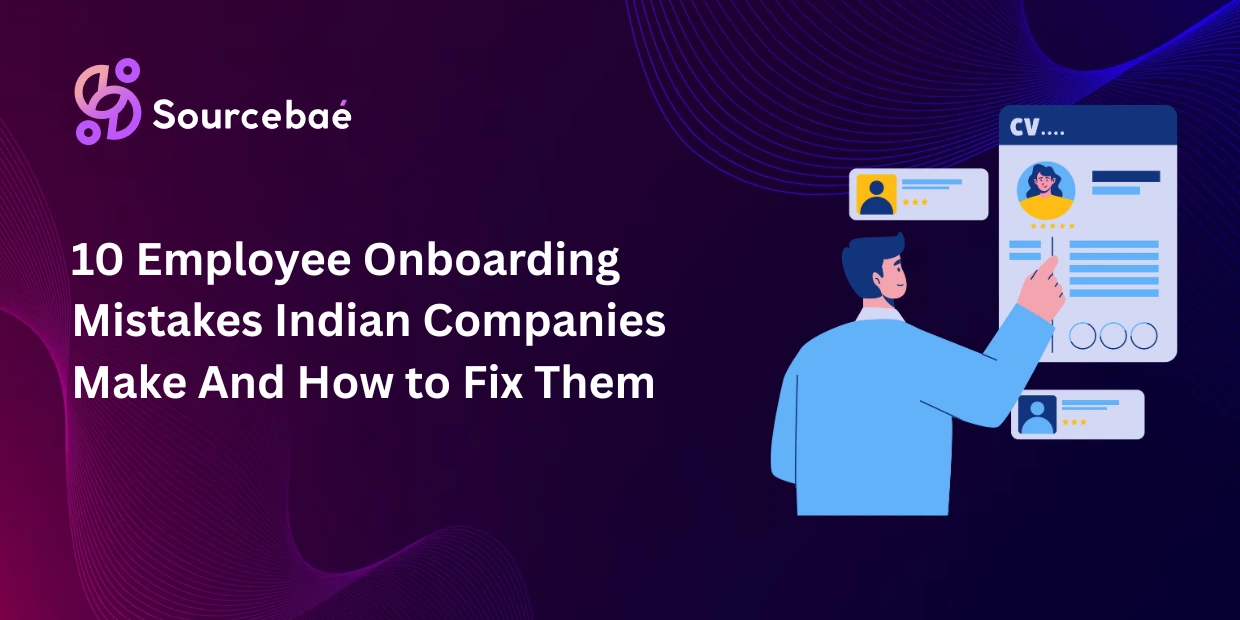Today’s rapidly evolving tech ecosystem has truly transformed the global employment landscape. Companies no longer rely solely on local talent but instead engage a diverse workforce spread across different countries, cultures, and continents. This innovative approach, known as borderless hiring, enables businesses to source and recruit talent globally, irrespective of geographic location.
With breakthroughs in technology driving remote collaboration, borderless hiring has gained immense popularity. Tech giants, innovative startups, and midsized firms all embrace this strategy to tap into global talent pools, benefiting from diverse perspectives while achieving cost efficiency. In this detailed guide, we explore the world of borderless hiring—its rise in the tech industry, key opportunities, inherent challenges, and strategic solutions to optimize outcomes.
Understanding Borderless Hiring
What is Borderless Hiring?
Borderless hiring means recruiting talent regardless of their physical location. Thanks to modern tools like Zoom, Slack, and Asana, technology has effectively erased geographical barriers, allowing organizations to onboard top talent anywhere in the world. Instead of restricting hiring efforts to local or national levels, employers search globally, ensuring access to skilled individuals who might not otherwise be available.
Key Drivers Behind the Growth of Borderless Hiring
Several factors have paved the way for borderless talent acquisition:
- Remote Work Revolution: Remote working is more widespread, popularized significantly by the global shift post-pandemic. Employees and employers alike embrace remote work practices, fostering a favorable environment for cross-border recruitment.
- Technological Advances: Cloud-based solutions and digital collaboration platforms have made coordinating tasks, managing projects, and facilitating seamless communication possible between global teams.
- Skill Gaps in Local Markets: Talent shortages, especially in niche or emerging tech fields, drive companies to look globally to bridge the gap effectively.
- Diversity for Innovation: Organizations increasingly understand diversity and inclusion as strategic advantages. Hiring globally increases workplace diversity, injecting fresh perspectives and innovative problem-solving capabilities.
The Industries and Roles Impacted
The trend towards borderless hiring predominantly influences tech sectors such as software engineering, data science, cybersecurity, digital design, machine learning, artificial intelligence, cloud computing, and fintech. These specialty fields often face local talent scarcities and benefit greatly from global sourcing.
Factors Accelerating Borderless Hiring in Tech
Accelerated Remote Work Acceptance Post-Pandemic
COVID-19 triggered rapid adoption of remote work. Companies previously hesitant about remote setups discovered numerous benefits, lending significant credibility and acceptance to borderless talent acquisition.
Digital Transformation and Collaboration Tools
Platforms like Slack, Zoom, Microsoft Teams, Asana, Trello, and Notion provide opportunities for real-time communication and seamless coordination across regions and time zones. These tools empower global teams and significantly accelerate remote talent integration.
Global Hiring Platforms
Sites like Upwork, Turing, Deel, Remote, and Oyster simplify the hiring process. Employers access vetted international talent easily, manage recruitment, onboarding processes, compliance, payroll, and taxation complexities through these specialized platforms.
Changing Employer Mindsets
Today’s forward-thinking organizations view talent search globally, seeking the best candidates rather than conveniently local matches. This strategic approach stems from recognizing the potential competitive advantages available through tapping into global talent resources.
Benefits of Borderless Hiring in Tech
Globalized hiring practices offer multiple substantial advantages for both employers and prospective workers.
For Employers:
- Global Talent Pool Access: Employers enjoy unrestricted access to diverse and high-quality talent, especially valuable for filling niche or specialized tech roles.
- Improved Hiring Speed: Accessing specialized talent quickly through broader candidate pools shortens the hiring lifecycle significantly.
- Cost Efficiency: Companies sometimes leverage lower-cost geographic localities without compromising talent quality, reducing operational expenditures.
- Innovative Ideas from Diverse Teams: Teams composed of individuals from different backgrounds and cultures foster innovative thinking and richer solution generation.
- Scalability and Agility: Flexibility in hiring facilitates rapid scale-up when new markets are targeted or new product offerings are launched.
For Employees:
- Expanded Opportunities: Unlimited global employment options regardless of residential location enable career advancements previously geographically restricted.
- Competitive Compensation: Candidates can explore improved pay structures available internationally.
- Flexible Work Environment: Remote global jobs allow individuals better work-life balance, significantly improving overall satisfaction and productivity.
- International Exposure: Employees immersed in diverse global teams gain valuable cross-cultural skills and broaden their professional horizons.
Challenges Associated with Borderless Hiring
Despite numerous advantages, global hiring does pose certain complexities.
Legal and Regulatory Compliance
Cross-border employment involves managing varied labor laws, taxation rules, payroll regulations, and contract systems across international boundaries. Mistakes could lead to substantial penalties.
Communication and Cultural Barriers
Team cohesiveness may suffer when employees from diverse cultures work remotely in a dispersed setup without proper integration channels.
Time Zone Differences and Project Coordination
Working across various time zones may affect timelines, productivity, responsiveness, and overall team collaboration efforts.
Data Privacy and Security Risks
Global workforce management raises data privacy concerns. Employers require robust measures to protect sensitive information and safeguard intellectual property rights.
Talent Identification and Vetting Difficulties
Accurately assessing international talents’ genuine capabilities, qualifications, and professional reliability becomes noticeably challenging without rigorous screening mechanisms.
Overcoming Barriers: Best Practices for Borderless Hiring
Organizations adopting strategic and targeted approaches can easily mitigate borderless hiring challenges.
Technology-Powered Recruitment and Onboarding
Deploy reliable Applicant Tracking Systems (ATS), recruitment CRM platforms, and collaborative digital tools to optimize candidate assessment and onboarding processes.
Cultural Training Programs
Prioritize communication and cultural sensitivity training, promoting understanding, respect, and collaboration within globally diverse teams.
Global Remote Work Guidelines and Policies
Clearly defined remote work policies outline expectations, roles, and operational criteria, supporting smooth employee onboarding and productive workflows.
Partnering With EOR Service Providers
Employer of Record (EOR) solutions by Deel, Oyster, Remote, or Globalization Partners effectively handle payroll management, legal compliance, benefits administration, and employee onboarding across multiple international jurisdictions.
Continuous Evaluation and Strategy Adjustments
Regular monitoring of hiring practices and periodic reassessment of recruitment strategies enable proactive optimization, enhancing results over time.
Real-World Examples and Case Studies of Successful Borderless Hiring Practices
Leading tech firms adopting global hiring strategies include multinational corporations like Google, Microsoft, and Salesforce, as well as rapid-growing startups such as GitLab, Automattic, and Buffer. These businesses successfully cultivate inclusive and productive workplace ecosystems, fueling company innovation and achieving impressive growth trajectories. For example, GitLab—a fully remote company representing a truly borderless workforce—effectively employs technology platforms and rigorous processes to manage global talent seamlessly, setting a benchmark in borderless hiring.
Trends and Forecasts for Borderless Hiring in Tech
Borderless hiring will likely experience continued growth and refinement as technology advances. Increasing adoption of AI-powered recruitment solutions, expanded global digital infrastructure, and greater organizational acceptance will further fuel this trend.
Hybrid and fully remote employment models integrating in-office and global remote teams promise broad appeal and widespread adoption. Emerging technologies—such as AI-driven HR tools, virtual immersive onboarding experiences, blockchain-backed smart contracts, and global payroll automation systems—will redefine borderless talent acquisition even further.
Conclusion
Borderless hiring in tech offers immense opportunities coupled with manageable challenges. Companies proactively adopting informed strategies enjoy competitive hiring advantages, enriched innovation through diverse viewpoints, and impressive business agility and scalability gains.
Leaders willing to embrace these dynamic global recruitment practices reap significant long-term operational and strategic value. Promising enhanced diversity, accelerated innovation, faster growth, improved productivity, and company-wide agility, borderless hiring represents the future of tech recruitment.
Frequently Asked Questions (FAQs)
What exactly is borderless hiring?
Borderless hiring refers to sourcing and recruiting skilled talent from anywhere in the world, irrespective of geographic location. Advances in remote collaboration and communication technologies have significantly enabled this modern recruitment approach.
Why is borderless hiring so popular in the tech industry?
Tech industries leverage borderless hiring extensively due to local talent shortages, remote work flexibility, lower recruitment costs in select locations, and powerful diversity-driven innovation benefits.
How does borderless hiring benefit companies?
Companies implementing global recruitment strategies benefit through expanded talent pools, improved hiring speed, cost efficiencies, diverse innovation insights, and enhanced organizational agility and scalability.
What common challenges exist with borderless hiring?
Common challenges for companies include managing global legal compliance complexities, overcoming cultural barriers within distributed teams, addressing time zone coordination issues, ensuring data security and privacy, and effectively vetting international candidates.
Embrace global innovation through borderless hiring practices. Have you adopted borderless hiring strategies? Share your experiences, questions, or thoughts in the comments—let’s build a stronger, borderless future in tech together!





